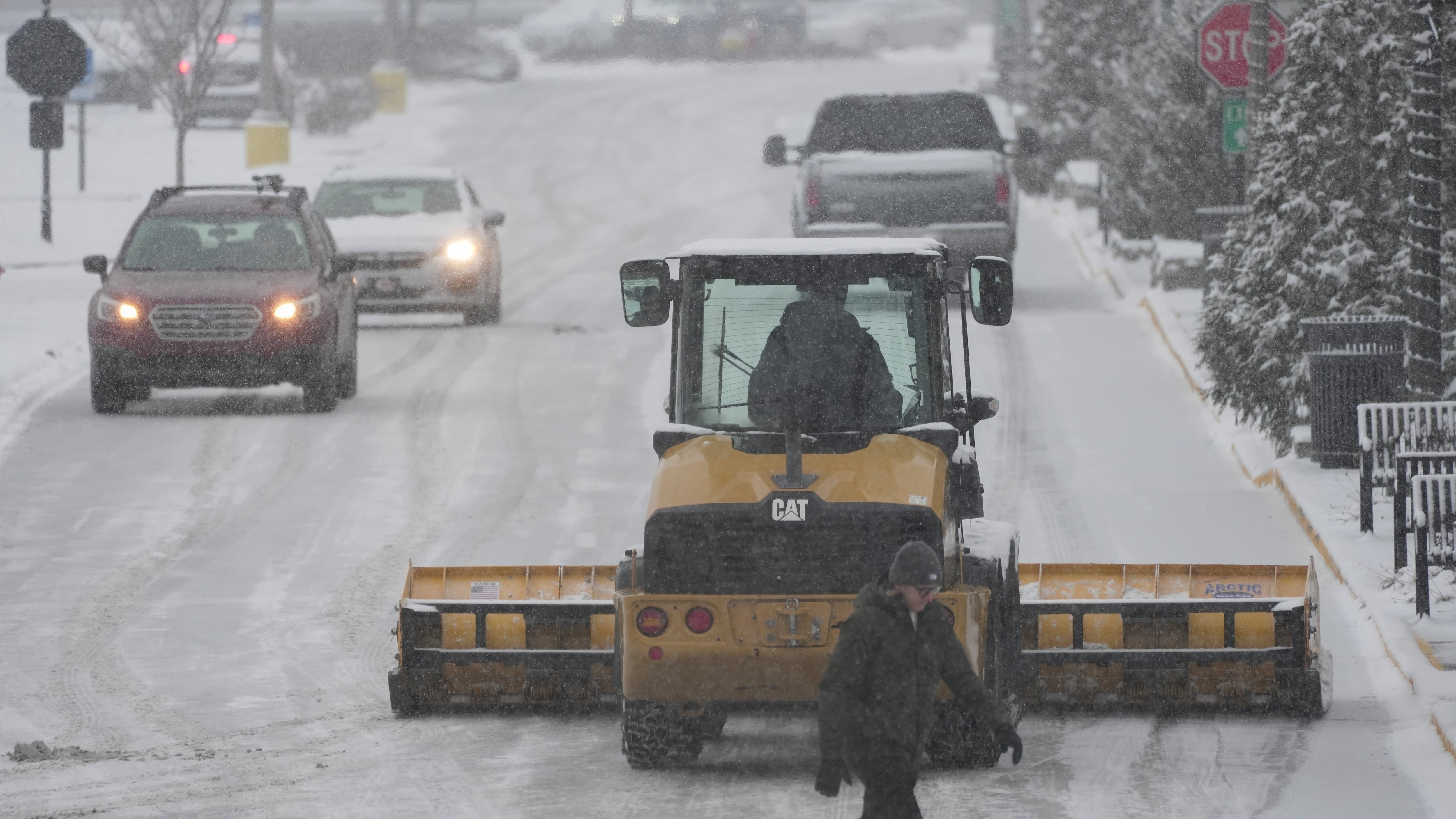An intense winter storm of snow, ice, wind, and dropping temperatures caused dangerous traveling conditions from the central and southern United States to the East Coast on Monday morning, leading to the closure of schools and government offices in several states.
PUBLICIDAD
Snow and ice covered the main roads in Kansas, western Nebraska, and parts of Indiana, where the state National Guard was activated to help stranded motorists. At least 20 centimeters (8 inches) of snow was expected, along with winds of up to 72 km/h (45 mph).
PUBLICIDAD
The National Weather Service issued winter storm warnings from Kansas and Missouri to New Jersey.
"For locations in this region that receive the highest snowfall totals, it could be the most intense snowfall in at least a decade," said the agency.
Class cancellation
Widespread class cancellations are expected on Monday. Districts in Indiana, Virginia, and Kentucky began announcing cancellations and delays on Sunday afternoon. Jefferson County Public Schools in Kentucky cancelled classes, extracurricular activities, and sports for its nearly 100,000 students.
Classes were also canceled in Maryland, where Governor Wes Moore declared a state of emergency on Sunday and announced that public offices would be closed on Monday.
"Keeping the residents of Maryland safe is our top priority. Please stay off the roads during this storm. Prepare your home and family and charge your communication devices in case you lose power," Moore stated in a press release.
Traffic accidents are on the rise.
During the weekend, at least 600 motorists were stranded in Missouri, authorities said. Hundreds of traffic accidents were reported in Virginia, Indiana, Kansas, and Kentucky, where a state trooper was treated for non-life-threatening injuries after his patrol car was struck.
The governor of Kentucky, Andy Beshear, who declared a state of emergency, said that government buildings would be closed on Monday.
"We are seeing too many accidents and people don't need to be on the roads, so I want to ask: stay at home," said Beshear.
The Virginia State Police reported at least 135 crashes as the storm made its way into the state on Sunday. In Charleston, West Virginia, where several inches of snow fell by Sunday night, authorities urged motorists to stay at home.
Snow and ice in the forecast
In Indiana, snow completely covered parts of Interstate 64, Interstate 69, and Route 41, leading the Indiana State Police to urge motorists to stay off the roads while snowplows worked to keep up.
"Sergeant Todd Ringle stated, 'It's snowing so hard that the snowplows pass by and then, in half an hour, the roads are completely covered again.'"
Approximately 25 centimeters (10 inches) of snow fell in Kansas, with eventual totals expected to exceed 36 centimeters (14 inches) in parts of that state and northern Missouri.
In Kentucky, Louisville recorded 19.5 centimeters (7.7 inches) of snow on Sunday, a new record for the date that broke the previous mark of (7.6 centimeters) (3 inches) set in 1910.
The storm is forecasted to move towards the Ohio Valley and reach the Mid-Atlantic states on Monday, with severe freezing reaching as far south as Florida. Winds knocked down trees in the south on Sunday.
Air and train travel were also affected.
The storms wreaked havoc on passenger railways, with over 20 cancellations on Sunday and around 40 planned for Monday.
"If local authorities are telling people not to travel, it doesn't make sense to provide all services when people are being told to stay at home," said Marc Magliari, spokesperson for Amtrak.
Nearly 200 flights to and from Lambert International Airport in St. Louis were canceled, according to the FlightAware website.
The temperatures are dropping.
Starting on Monday, the eastern region of the United States will experience freezing temperatures, as indicated by meteorologists. Temperatures could drop to between 7 and 14 degrees Celsius (12 to 25 Fahrenheit) below normal.
In Chicago, the temperatures were between 7 and 10 degrees Celsius below zero (between 10 and 20 Fahrenheit) and dropped to 11.7 degrees Celsius below zero (11 degrees Fahrenheit) in International Falls, Minnesota, on the border with Canada.
The northeastern states will have several days of severe cold following a relatively mild start to winter, said meteorologist Jon Palmer in Gray, Maine.
The cold air will likely affect the eastern United States and reach as far south as Georgia, Palmer added.
